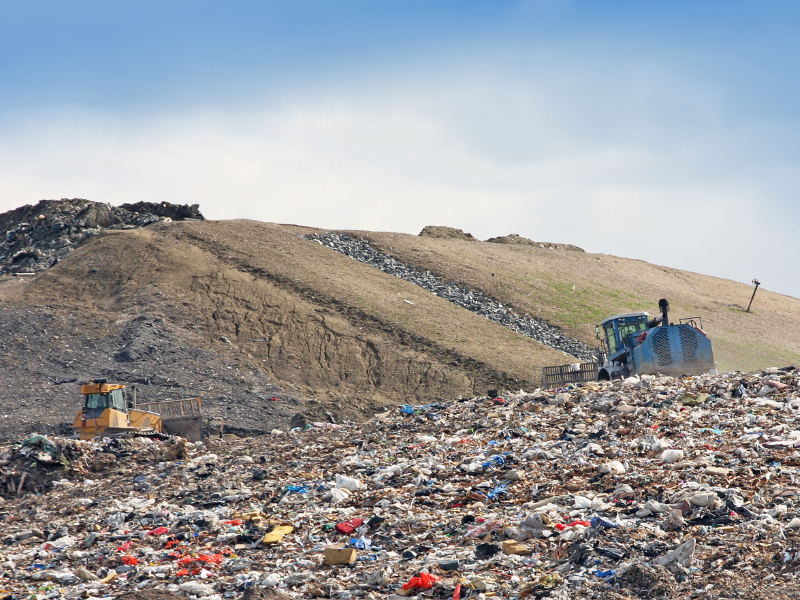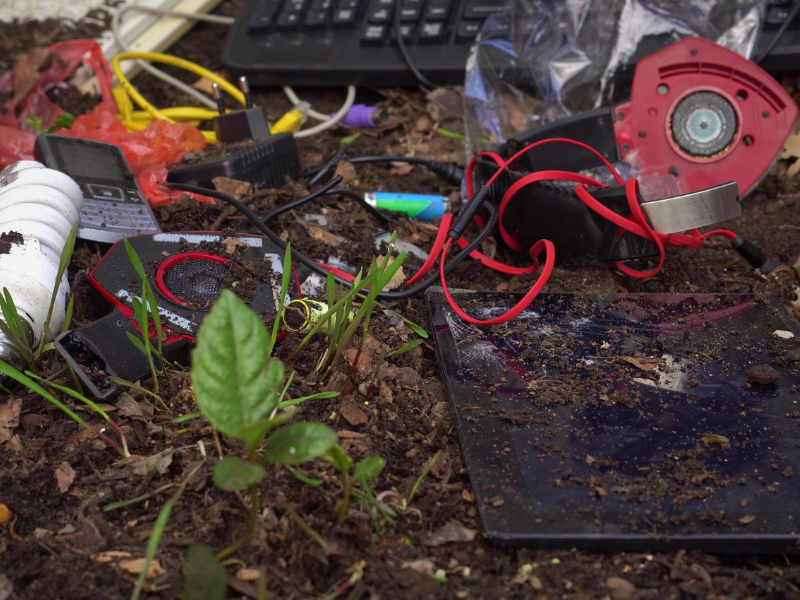Where does garbage go when you throw it away? Most people never give it a second thought. Our garbage collectors might as well be magicians; for all we know, they make our refuse disappear.
The truth, of course, is that garbage doesn’t simply vanish. Instead, much of it ends up in landfills, designated waste disposal sites that try to reduce environmental pollution by confining non-hazardous materials to as compact and remote a location as possible.
That’s the idea, anyway. At Newtech Recycling, we know that it doesn’t always work out that way.
The Problem of Waste Disposal and Landfill Waste
One of the biggest challenges facing landfills today is electronic waste, or e-waste. When individuals and organizations forgo proper tech recycling in favor of illegally discarding their unwanted computers, televisions, cell phones, and other devices by dumping them in landfills, they’re not just breaking the law. They’re also introducing toxic materials like lead, mercury, chlorofluorocarbons, and more into the environment, where it can poison the soil, water, and air alike.
That’s not the only issue caused by the improper disposal of e-waste, though. There’s another big problem with landfill waste, one that’s only getting bigger every day.
Simply put, we’re running out of space in landfills.

Important Landfill Capacity Statistics
According to recent Environmental Protection Agency estimates, Americans dump roughly 150 million tons of garbage, including e-waste, into landfills annually. The EPA also estimates that only 25% of all discarded electronic devices ever get recycled. That means a lot of our old tech is ending up exactly where it’s not supposed to.
As a result, the Solid Waste Environmental Excellence Protocol reports that the U.S. could exceed its current landfill capacity within just 18 years. States with more urban areas, like New York, are already struggling with waste disposal. Some have resorted to exporting their trash to other larger states, effectively sweeping the issue under the rug instead of trying to solve it.
With the amount of garbage Americans produce increasing each year and with e-waste in particular on the rise thanks to how ubiquitous high-tech devices have become, the need for landfill space is rapidly outpacing our ability to accommodate it.
Simply put, landfill waste is a huge problem that will ultimately affect everyone.
What Happens When a Landfill Is Full?
As noted above, modern electronic equipment contains all kinds of hazardous materials and heavy metals, including mercury, cadmium, arsenic, lithium, beryllium oxide, and lead. When left to decay in overcrowded landfills, e-waste poses a very real threat both to the environment and to human health.
Many landfills today are equipped with special liners that work to prevent our garbage from seeping into the ground. However, with landfill capacity being stretched thinner and thinner over time, these liners are proving inadequate at shielding the earth from our refuse. When toxic e-waste materials leech into the soil, it can have far-reaching effects. Instead of fading away, these materials spread out, contaminating vegetation and the animals who feed off it. These animals can then introduce contamination into the human population, and even into the food supply.
Additionally, rainfall often causes e-waste pollutants to run off into streams and other water sources, and wind currents carry dangerous gases and particles for miles. In the human body, these contaminants can cause serious damage to the lungs, liver, kidneys, heart, and other organs, and may lead to cancer, miscarriage, nerve disorders, and worse.
So, where does our garbage go after we’ve thrown it away? Well, after a while, it comes back to haunt us, doesn’t it?

How to Reduce Landfill Pollution
If the idea that we’re running out of space in landfills is as concerning to you as it should be, it’s worth remembering that the situation is not irreversible. One obvious way to create more landfill space is to simply create more landfills. Unfortunately, that’s a slower process than you might think. It often takes several years to find an ideal location, apply for permits, and prepare the site in accordance with EPA regulations.
Worse, creating more landfills isn’t sustainable. We only have so much space, after all. Replacing lost waste disposal land with land taken from other areas will ultimately lead to us having no land of any kind whatsoever. Furthermore, it does nothing to combat the ever-growing threat of pollution.
The best way of unburdening landfill capacity, then, is to reduce the amount of landfill waste we dump there to begin with. Today’s landfills are full of all kinds of compostable and recyclable material, from plastic and aluminum to paper and food waste. What’s more, recycling has another benefit: it reduces the need for manufacturers to mine raw materials for their products.
Proper phone, TV, and desktop disposal services, such as those available from Newtech Recycling, allow for valuable recyclable materials like gold, platinum, copper, and nickel to be recovered and reused.
Help Mitigate Harmful Landfill Waste with Newtech Recycling
Knowing how big our landfill problem is right now can leave one feeling rather defeated. It’s such a prolific problem that affects the world, and you might be thinking, what can I possibly do to help?
One of the best ways to protect the environment from the harmful effects of e-waste is to do your part and properly dispose of your electronic waste. If you only have a few old phones or charging cables at home, take them to an electronic waste drop-off location instead of throwing them in the trash.
Are you a business looking for e-waste disposal or corporate cleanout services? We can help! Contact NewTech Recycling today to learn how we can help you safely dispose of your e-waste.

